Invite. Collect. Emit.
Digital share issuance for unlisted companies. Done right.
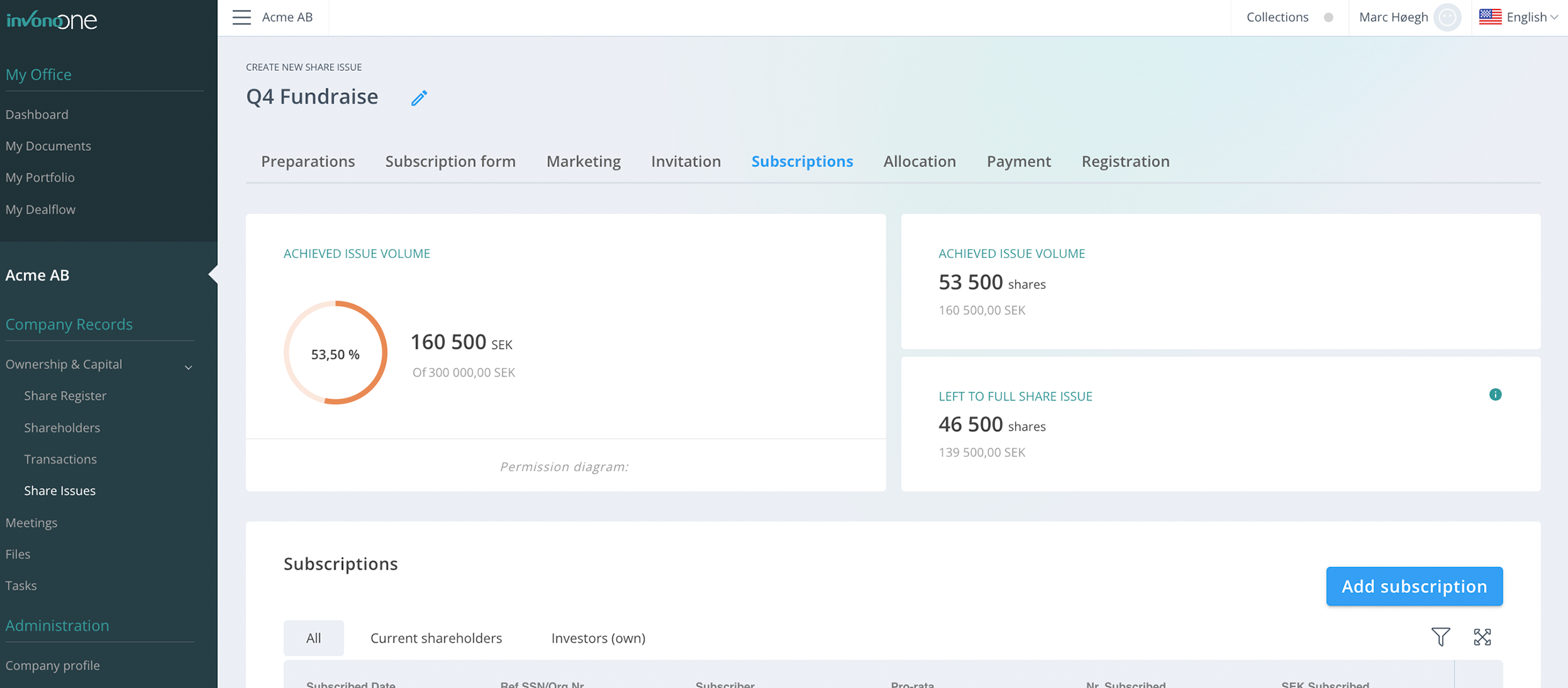
Share issuance in unlisted companies
When carrying out a new issue, there are many things to keep track of so that the process will be efficient and correct. Before you start an issue, you must have made a formal decision at a board meeting and at a general meeting.
The general meeting must be quorum and the issuance decision must be within the framework of the current articles of association.
The problem
Once that's done, the hard work begins with convincing existing shareholders to continue to "support" the company's journey to success, while often also requiring finding and convincing new investors to "get on the train."
Both existing shareholders and new investors want to see a clear plan for value growth and repayment of invested capital, and the process of selling one's own company in an issue requires its own section.
However, in parallel with this work, you must also be able to show the investors that you are in control of the situation and that there is structure and order in the company. You must be "investment ready" at the same time as you must administer all the time-consuming steps in the issue process.
The solution
This is where Invono One comes in with its share issuance module. We help you check that the formalities are correct before the new issue and then we guide you through 8 steps in the issuance process where the time-consuming steps are automated and you get full control through the various steps.
If you then need us to help with the process, the valuation or how to find new investors and sell the issue to them, we will be happy to help with that as well.
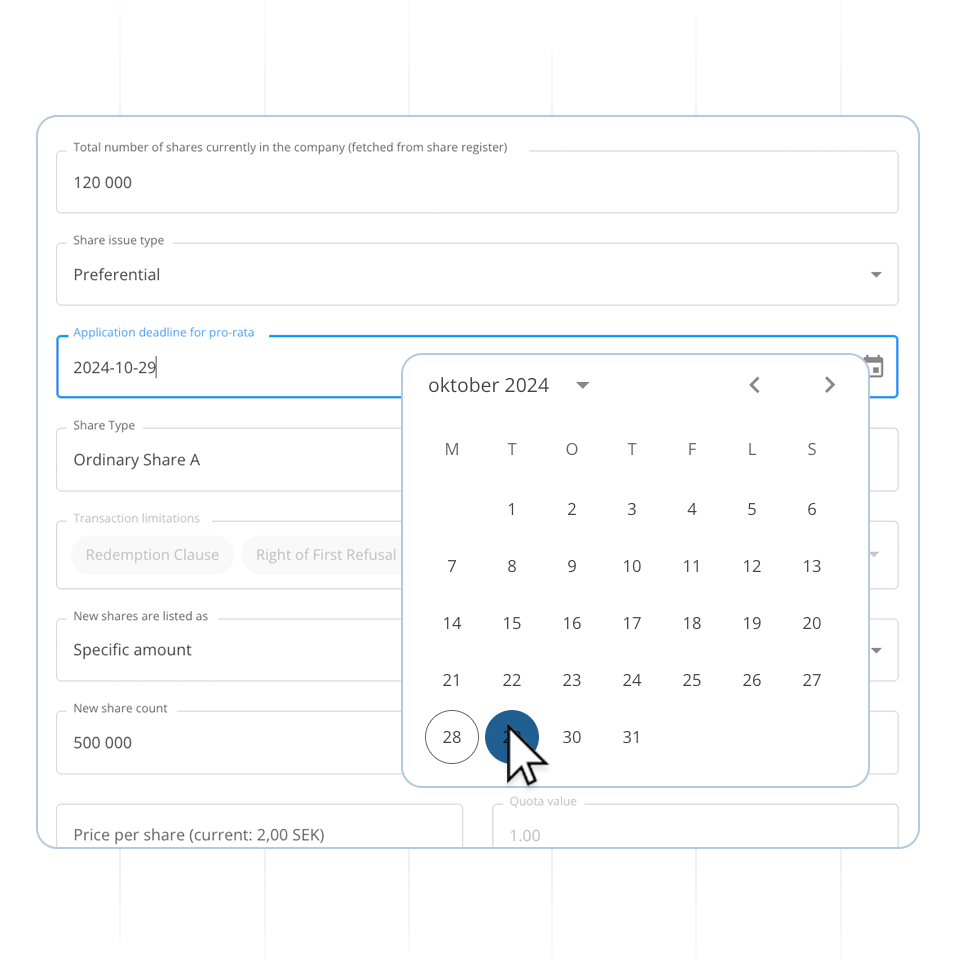
1. Specify the fundamentals.
Specify how many shares, at what cost, by which date, what should happen to any exceeding amount, how allocation is decided, when payment is expected etc.
Specify how many shares, at what price, latest subscription date, how and when payment is to be made, how allocation is decided, etc.
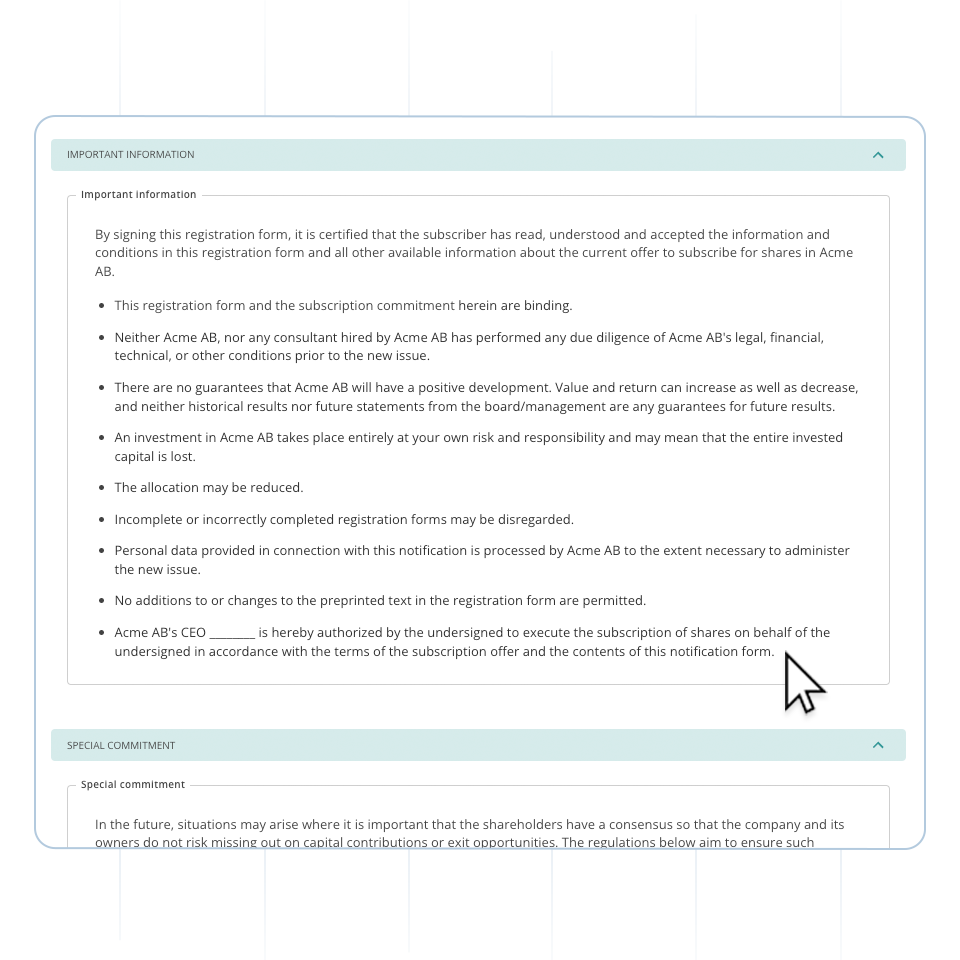
2. Set up your subscription form.
We provide suggested standard texts with basic information. You can edit them to suit your needs, for instance, providing additional required legal information.
Existing shareholders receive an electronic registration form that is pre-filled - they only need to add the number of shares they express an interest in subscribing to. New investors fill in how they intend to subscribe and information about the subscriber.
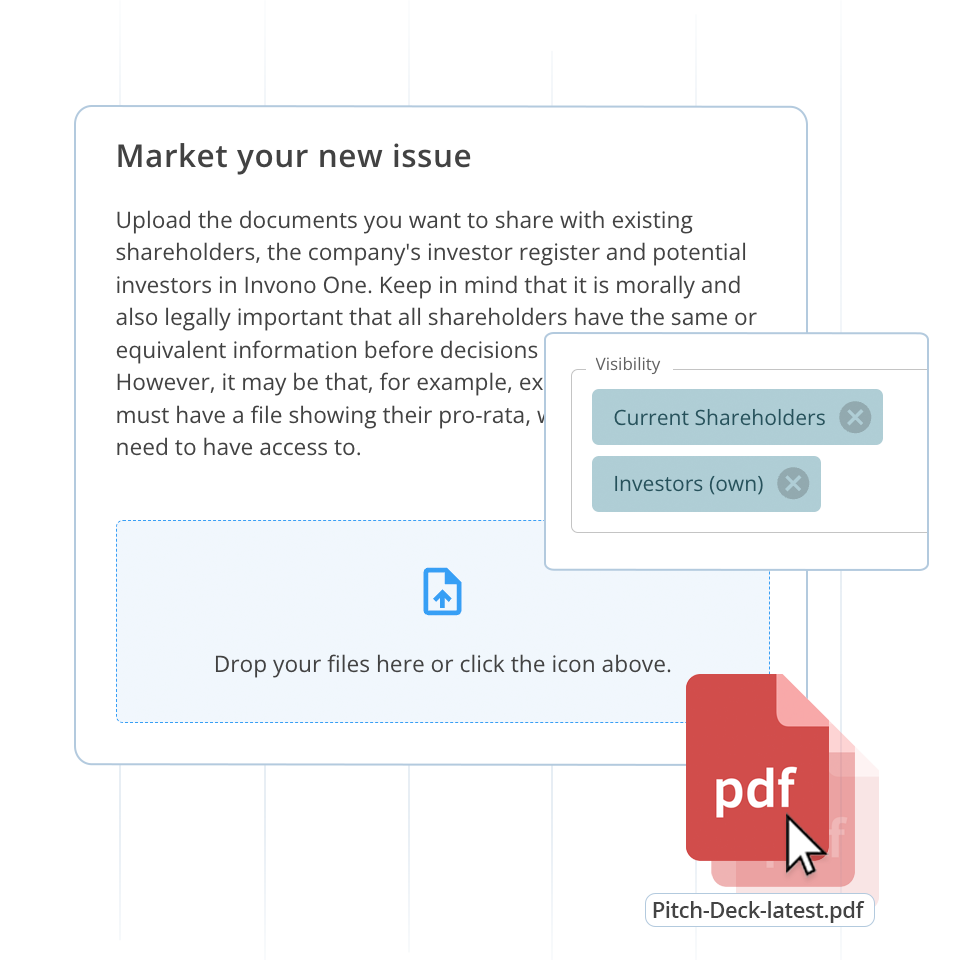
3. Present your case.
Upload marketing materials that describe why they should invest in your business. This can usually be a pitch deck along with other relevant information about your business.
Here you configure, among other things, whether you want to display a diagram that shows how things are going in the issue.
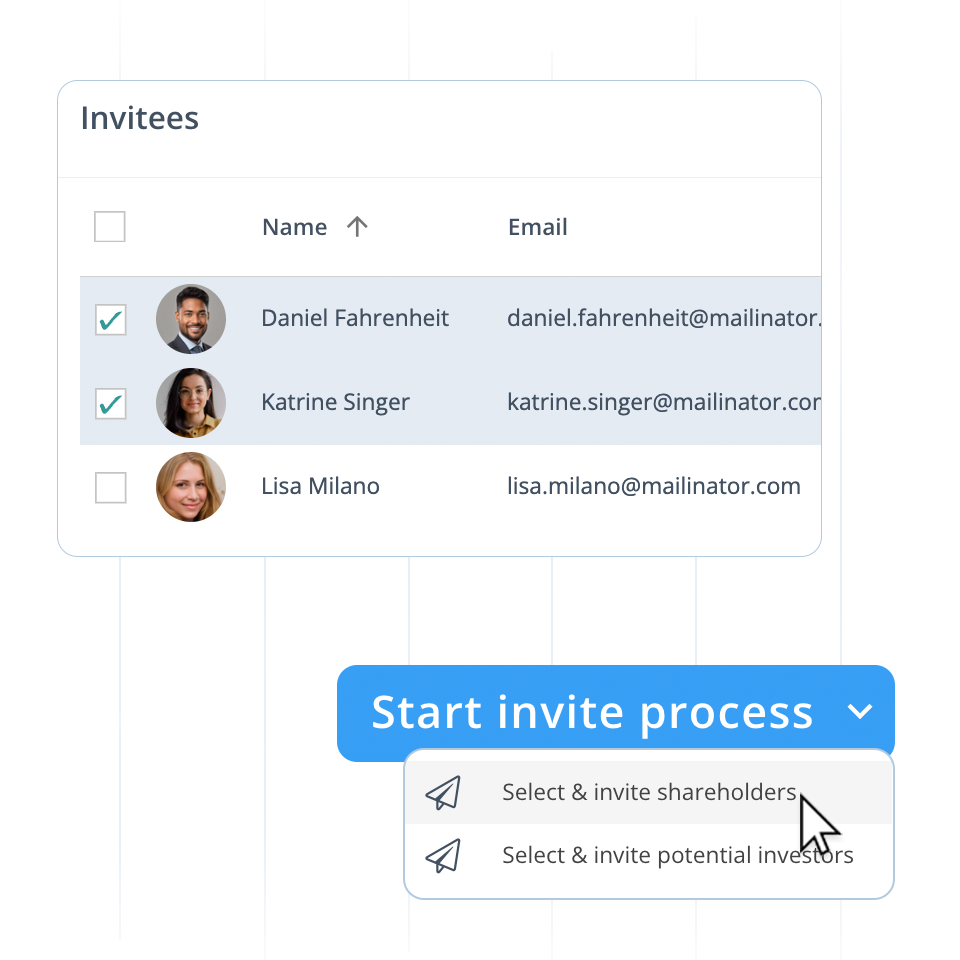
4. Invite your investors.
Choose who should be able to participate in the issue. You can choose between existing shareholders, investors that you have in your own register or you can let our platform find potential investors for you, based on whether they have shown interest in your company directly or indirectly.
We recommend all companies to advertise for new investors in the platform. It costs nothing extra!

5. Collect subscriptions.
When you invite the shareholders, you get access to a simple CRM system so that you can process your investors until a decision is made. You get a good overview of who has subscribed for shares and how much has been subscribed in total.
It only takes minutes for the person who is to subscribe for shares to fill in the information and e-sign via the phone.

6. Allocate shares.
Decide how you want to allocate shares based on the application forms submitted. If it is an existing shareholder, their pro-rata is pre-filled and it is therefore easy to determine allocation.
In case of oversubscription, you get to decide how many shares you will ultimately offer each shareholder. We have support to help with these calculations.

7. Receive payment for your shares.
When you close or partially close the issue, the share book is automatically updated and settlement notes with allocated shares and share sequences are sent out with information about payment.
When the shareholder has paid, the receipts are sent out with the push of a button.
You have full control over the wording of the e-mails that are sent out with invoices and receipts.
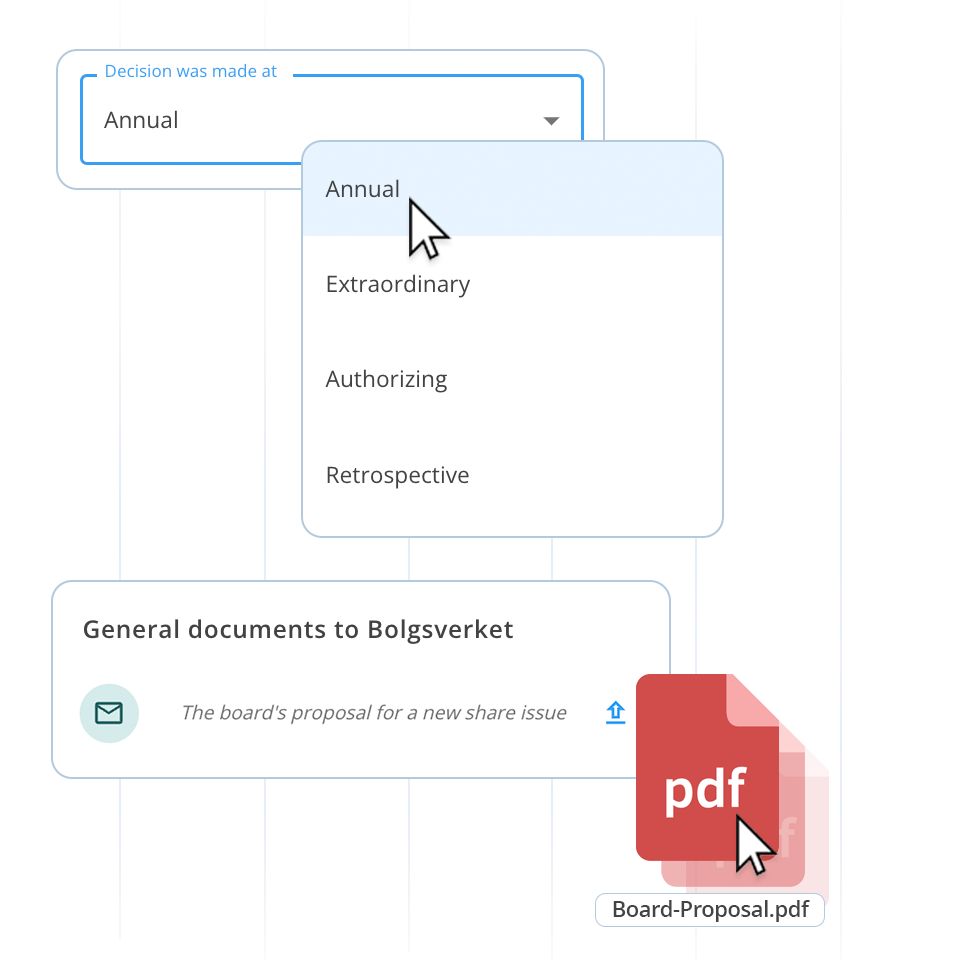
8. Register with the Registration Office.
Finalise the process by gathering and uploading the required documentation containing details about your share issue.
This is also where you collect and upload any confirmations, such as receipts for payment to the Registration Office etc. This means that you have all documentation surrounding the entire process neatly stored in one place for future reference.
Questions about share issuance
How many shareholders may subscribe for shares in a new issue?
This describes what applies to a coupon company (a private company that is not a reconciliation company).
A maximum of 200 new shareholders may be allocated shares in a new share issue. This means that if you have 100 shareholders already and all subscribe for shares in the new issue, you can have 300 who subscribe for shares in the issue (100 old shareholders and 200 new shareholders). This is based on the Dissemination Prohibition, which prohibits a private company from disseminating its issue offer to more than 200 people, unless they have asked in advance to take part in such offers.
How many shareholders can a private company have?
A private company may have any number of shareholders. Historically, it has been an advantage to become a reconciliation company and let Euroclear manage one's share book, as it has been difficult to manage this in paper form or Excel sheets when the owner list has become too large. With the electronic share book in Invono One and share deposits for the shareholders, this is no longer a problem. Many companies today choose to manage their share register themselves, even if they have many shareholders, as it gives them better control and contact with their shareholders.





Get help issuing shares today.
We can help you start issuing shares in your unlisted company.